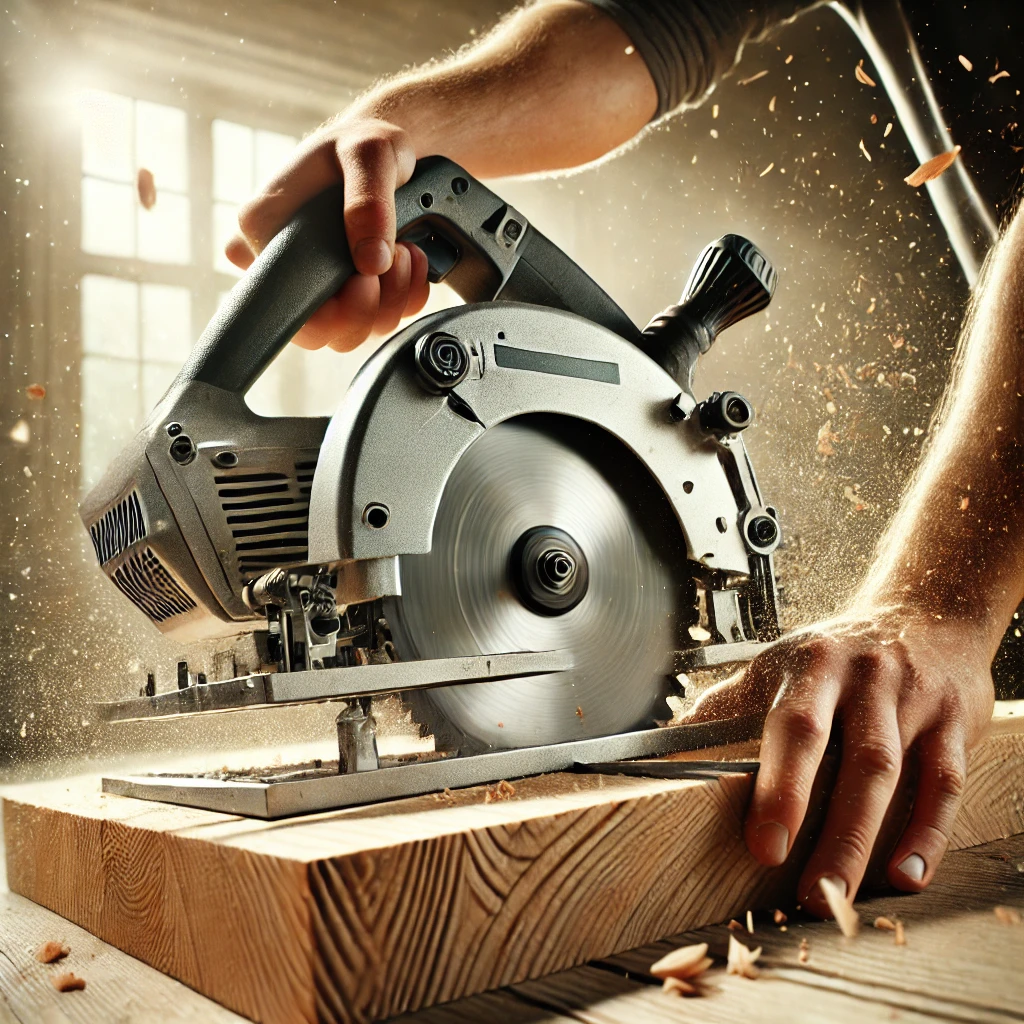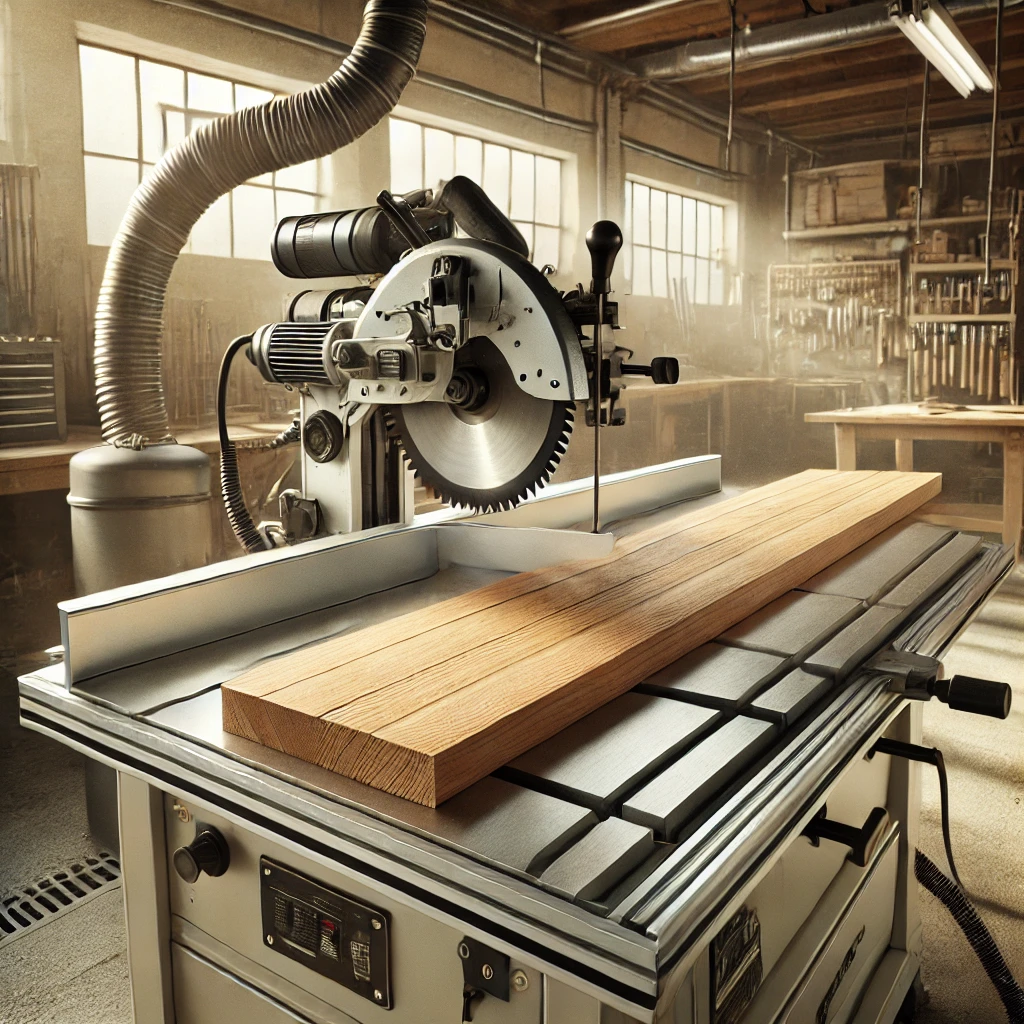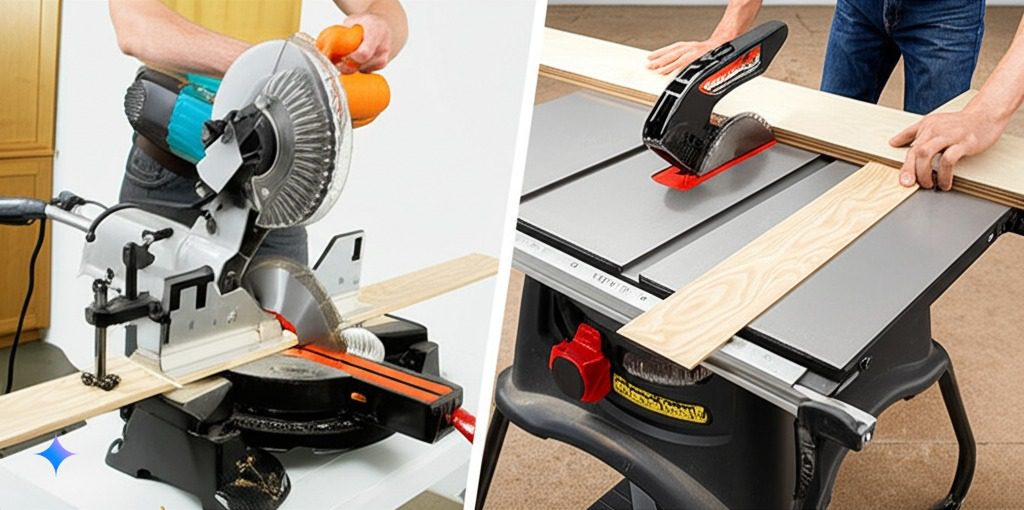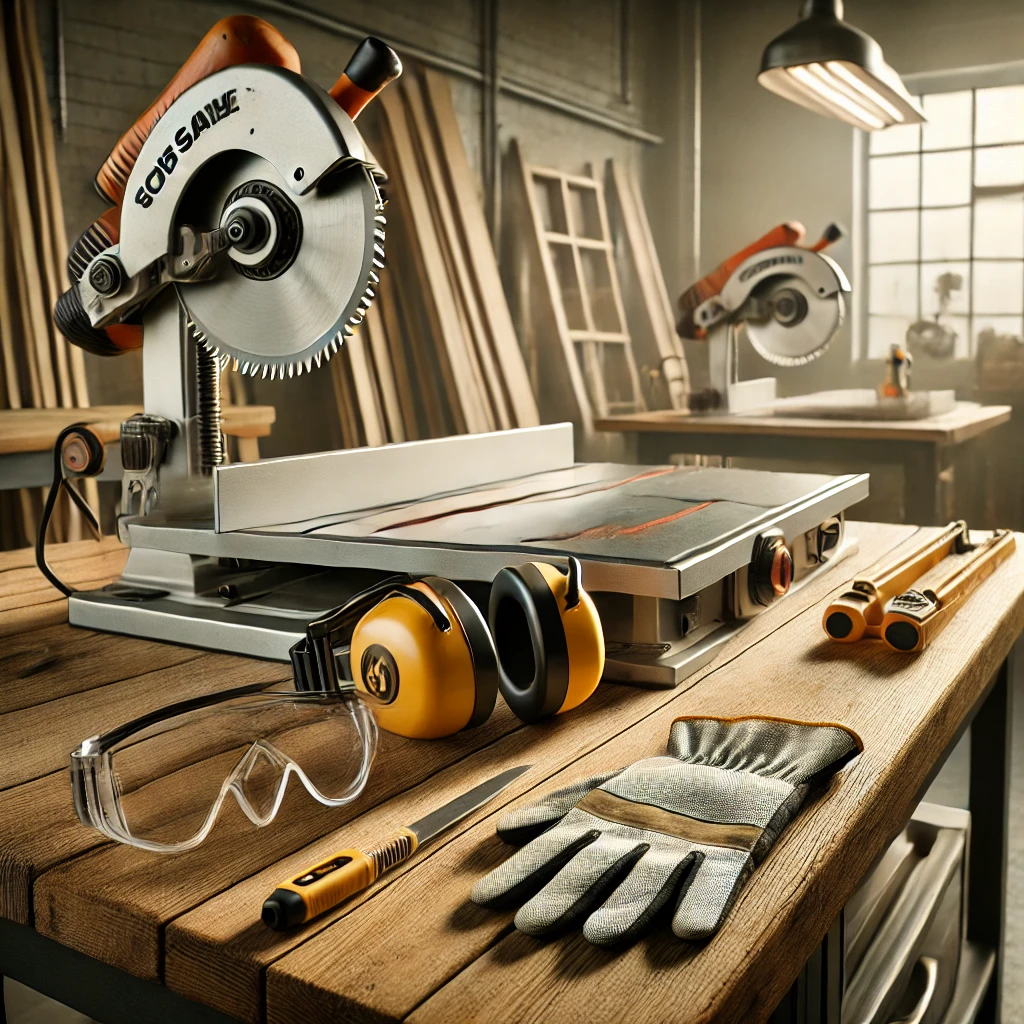When it comes to woodworking tools, few decisions are as critical as choosing the right saw for your projects. Two of the most popular options are chop saws and table saws, but understanding their differences, strengths, and weaknesses can be challenging. Whether you’re a DIY enthusiast or a professional woodworker, selecting the right tool can make all the difference in the quality and efficiency of your work.
In this comprehensive guide, we’ll break down the key differences between chop saws and table saws, explore their pros and cons, and help you decide which tool is best suited for your needs. By the end of this article, you’ll have a clear understanding of which saw to reach for, whether you’re making precise crosscuts, rip cuts, or tackling large-scale projects.
What is a Chop Saw?

A chop saw, also known as a miter saw, is a specialized power tool designed for making accurate crosscuts and angled cuts in wood, metal, or other materials. It features a circular blade mounted on a pivoting arm, which allows you to lower the blade onto the workpiece to make clean, precise cuts. Chop saws are typically used for cutting boards, trim, and molding to specific lengths and angles.
Key Features of a Chop Saw:
- Portability: Most chop saws are compact and lightweight, making them easy to move around your workspace.
- Precision: Ideal for making accurate crosscuts and miter cuts at various angles.
- Ease of Use: Simple operation with minimal setup required.
- Blade Size: Typically ranges from 8 to 12 inches in diameter.
What is a Table Saw?

A table saw is a stationary woodworking tool that features a circular blade protruding through the surface of a flat table. The blade is adjustable in height and angle, allowing you to make a variety of cuts, including rip cuts, crosscuts, and beveled cuts. Table saws are known for their versatility and are often considered the centerpiece of a woodworking shop.
Key Features of a Table Saw:
- Versatility: Capable of handling a wide range of cuts, including rip cuts, crosscuts, and dado cuts.
- Power: Equipped with powerful motors, making them suitable for cutting thick or dense materials.
- Stability: Stationary design provides a stable and secure cutting surface.
- Blade Size: Typically ranges from 8 to 12 inches in diameter.
Chop Saw vs Table Saw: Key Differences

To help you decide which tool is right for your needs, let’s compare chop saws and table saws across several key factors:
1. Type of Cuts
- Chop Saw: Best for crosscuts and angled cuts (e.g., miter cuts, bevel cuts). Ideal for cutting boards, trim, and molding to specific lengths.
- Table Saw: Excels at rip cuts (cutting along the length of the wood) and dado cuts. Can also handle crosscuts with the use of a miter gauge.
2. Portability
- Chop Saw: Highly portable and easy to move around. Perfect for job sites or small workshops.
- Table Saw: Generally stationary and bulky. Best suited for a dedicated workshop.
3. Accuracy
- Chop Saw: Offers superior precision for crosscuts and angled cuts, thanks to its pivoting arm and adjustable angles.
- Table Saw: Provides excellent accuracy for rip cuts and straight cuts, especially when used with a fence or miter gauge.
4. Versatility
- Chop Saw: Limited to crosscuts and angled cuts. Not suitable for rip cuts or large-scale projects.
- Table Saw: Highly versatile, capable of handling a wide range of cuts and materials.
5. Safety
- Chop Saw: Generally safer for beginners due to its enclosed blade and straightforward operation.
- Table Saw: Requires more caution, as the exposed blade can pose a risk if not used properly.
6. Cost
- Chop Saw: Typically more affordable, with prices ranging from $100 to $500.
- Table Saw: More expensive, with prices ranging from $300 to $1,500 or more, depending on the model and features.
Pros and Cons of Chop Saws and Table Saws
Chop Saw Pros:
- Highly portable and easy to set up.
- Excellent for precise crosscuts and angled cuts.
- Safer for beginners due to the enclosed blade.
- Affordable compared to table saws.
Chop Saw Cons:
- Limited to crosscuts and angled cuts.
- Not suitable for rip cuts or large-scale projects.
- Smaller cutting capacity compared to table saws.
Table Saw Pros:
- Extremely versatile, capable of handling a wide range of cuts.
- Ideal for rip cuts and large-scale projects.
- Powerful motors can cut through thick or dense materials.
- Stable and secure cutting surface.
Table Saw Cons:
- Bulky and not portable.
- More expensive than chop saws.
- Requires more skill and caution to operate safely.
Which Tool is Right for You?
The choice between a chop saw and a table saw ultimately depends on your specific needs and projects. Here’s a quick guide to help you decide:
- Choose a Chop Saw If:
- You need to make precise crosscuts or angled cuts.
- You work on smaller projects like trim, molding, or framing.
- You need a portable tool for job sites or small workshops.
- You’re a beginner looking for a safer, easier-to-use tool.
- Choose a Table Saw If:
- You need to make rip cuts or handle large-scale projects.
- You work with a variety of materials and require a versatile tool.
- You have a dedicated workshop space for a stationary tool.
- You’re an experienced woodworker comfortable with advanced tools.
Tips for Using Chop Saws and Table Saws Safely

Regardless of which tool you choose, safety should always be your top priority. Here are some tips to keep in mind:
- Wear Safety Gear: Always wear safety glasses, ear protection, and gloves when operating power tools.
- Follow the Manual: Read and follow the manufacturer’s instructions for your specific saw.
- Use a Push Stick: When using a table saw, use a push stick to keep your hands away from the blade.
- Check the Blade: Ensure the blade is sharp, properly aligned, and securely fastened before making any cuts.
- Keep the Workspace Clean: Remove any debris or obstructions from your workspace to prevent accidents.
Conclusion
Both chop saws and table saws are invaluable tools for woodworking, but they serve different purposes. A chop saw is perfect for precise crosscuts and angled cuts, while a table saw excels at rip cuts and large-scale projects. By understanding their differences and evaluating your specific needs, you can make an informed decision and choose the right tool for your workshop.
Whether you’re a DIY enthusiast or a professional woodworker, investing in the right saw will not only improve the quality of your work but also make your projects more enjoyable and efficient. So, which one will you choose—the portable precision of a chop saw or the versatile power of a table saw? The choice is yours!
Final Thoughts: If you’re still unsure which tool to invest in, consider your most common projects and workspace limitations. Both tools have their place in a well-equipped workshop, and many woodworkers find that owning both a chop saw and a table saw provides the ultimate flexibility for tackling any project. Happy woodworking!

Finlay Connolly is a woodworking enthusiast and power tool specialist with over a decade of hands-on experience in the workshop. As the founder and lead writer at ProTableSawReviews.com, Finlay combines expert knowledge with real-world testing to help woodworkers, DIYers, and professionals choose the best tools for the job. With a sharp eye for detail and a passion for precision, Finlay is committed to providing trustworthy, practical advice backed by years of experience and research in the field. Whether you’re cutting dados or comparing fence systems, you can count on Finlay for honest, reliable reviews that make your next cut your best one.
